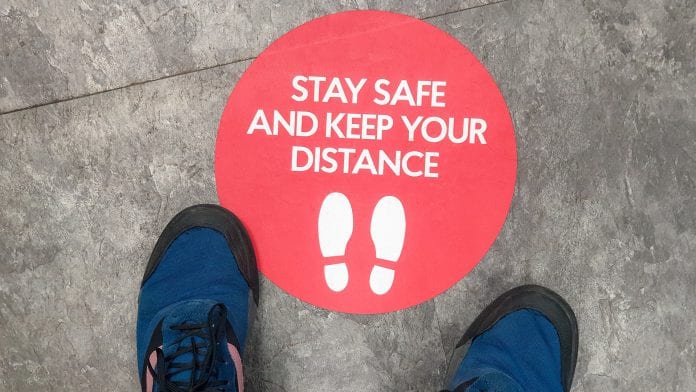
Experts at The British Medical Journal (BMJ) argue that current social distancing rules of one or two metres are based on outdated science and experience of past viruses.
Such social distancing rules are not helpful, say the BMJ experts, as they are based on an over-simplistic dichotomy describing viral transfer by either large droplets or small airborne droplets emitted in isolation without accounting for the exhaled air.
Nicholas Jones at the University of Oxford and colleagues note that transmission is much more complex, involving a continuum of droplet sizes and an important role of the exhaled air that carries them.
Droplets can spread further than two metres
The researchers say that social distancing rules need to take account for multiple factors that affect the risk of a COVID-19 infection, such as levels of ventilation in a space and whether face coverings are worn.
They highlight that smaller, COVID-19 laden airborne droplets can travel more than two metres by activities such as coughing and shouting and may spread up to seven or eight metres concentrated in exhaled air from an infected person.
Viral load of the emitter, duration of exposure, and susceptibility of an individual to infection are also important, they add.
The researchers note: ‘This would provide greater protection in the highest risk settings but also greater freedom in lower risk settings, potentially enabling a return towards normality in some aspects of social and economic life.’
High risk scenarios
The researchers highlight that in high risk situations, such as bars and nightclubs, physical distancing of more than two metres, as well as minimising occupancy time, must be considered. However, they note that in lower risk situations less strict distancing would be needed.
‘Physical distancing should be seen as only one part of a wider public health approach to containing the COVID-19 pandemic. It should be used in combination with other strategies to reduce transmission risk, including hand washing, regular surface cleaning, protective equipment and face coverings where appropriate, strategies of air hygiene, and isolation of affected individuals,’ they add, and that further research is needed to develop guidance for specific indoor environments.










